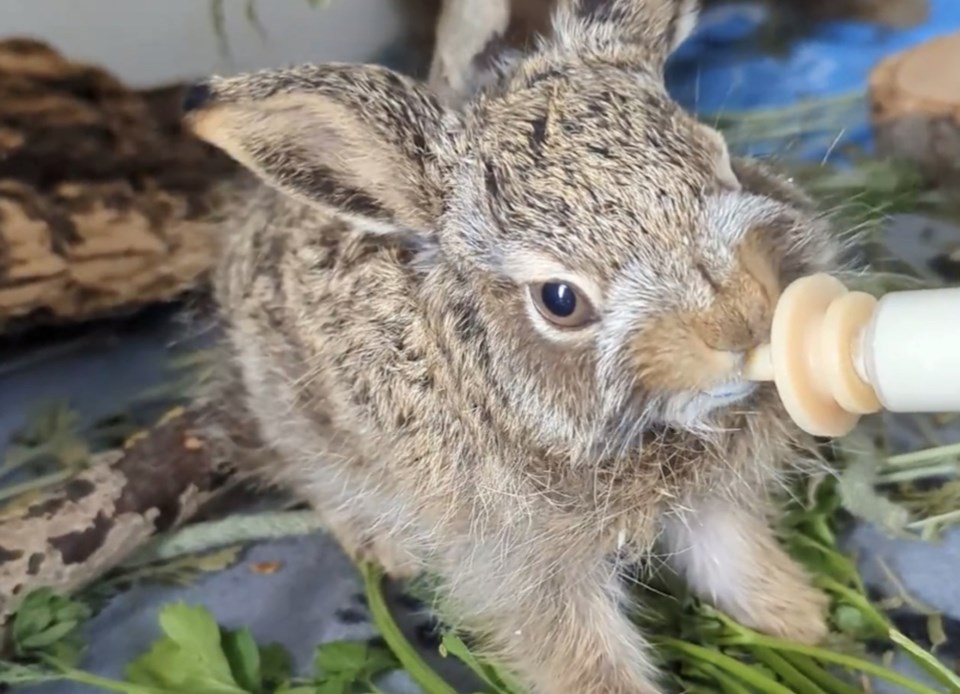The Alberta Institute for Wildlife Conservation (AIWC) in northwest Rocky View County is reminding residents that if they “see a hare, to leave it there.”
Spring has sprung, which is a prime nesting time for mammals and other wildlife species. As usual, that means there's an abundance of baby jackrabbits or hares this time of year.
Out of a misplaced sense of doing what's right, many people who come across baby hares left abandoned in a field often transport the small animal to a veterinary hospital or wildlife rehabilitation facility, under the well-intended assumption that the creature has been left orphaned or abandoned by its mother.
But according to Rachel Swart, the communications coordinator for AIWC, when it comes to baby hares, that's not usually the case. The best option is to leave the animal be, as its mother knows where it is and will be returning later that evening or morning to feed it.
“Hares in particular are very independent from their mothers, so they’re left alone throughout the day and their mothers only return at dusk or dawn to feed them,” Swart explained. “A lot of people see a baby hare left on its own and feel they need to rescue them, but they’re actually totally fine and should stay left where they are.”
As hares (or jackrabbits) are among the first mammals that start to give birth in the spring, Swart said AIWC typically sees an influx of accidentally kidnapped baby hares brought to the Madden-based institute every April. That's what has prompted the animal hospital and rehab centre to promote the message of leaving them be every spring.
“We actually saw a little bit of a decrease last year, and we’re hoping that’s because of the messaging and people calling or checking with us before grabbing them,” she said. “It’s a fairly common thing for people to bring them in and they’re uninjured and more likely unintentionally kidnapped.”
According to AIWC, baby hares are born without a scent, which allows them to avoid predation and permits them to be left alone safely for several hours at a time while their mother is out feeding.
Baby hares also 'precocial,' which simply means they are born fully furred, with their eyes open, and able to move and feed (on greens) without any assistance from their mother. This differs from hares' domestic counterparts who are 'altricial,' or born naked and blind.
Swart added that baby hares usually struggle when in the care of humans, and studies have indicated that they “have less than a 10 per cent success rate” of re-integration into the wild, just because their gastrointestinal system is so sensitive.
“It’s best for them just to get their mother’s milk since we can’t replicate it exactly in care,” Swart said.
Before intervening in the development of a baby hare, AIWC recommends members of the public call their wildlife hotline at 403-946-2361 for assistance.




